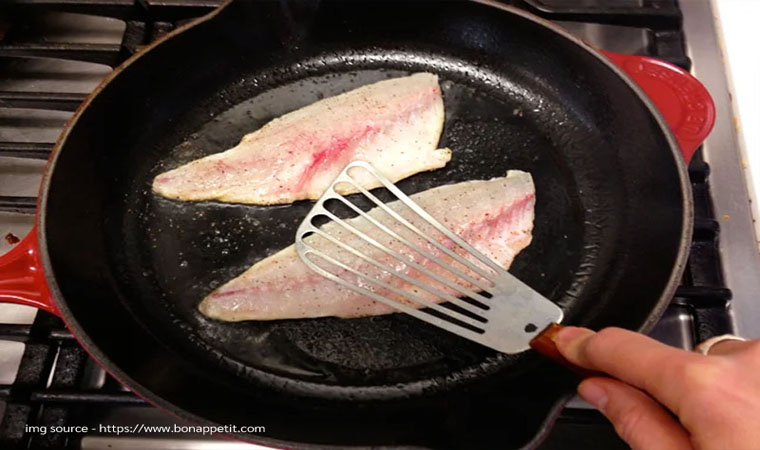Many people are afraid to cook fish at home because they think it’s too fragile. Knowing a few simple facts can change this attitude forever and bring this lovely and nutritious dish into your home cuisine.
Buying the Fish at a Trustworthy Market
The people handling your food are as important as the food itself. Shopping in a market with a clean environment, a good reputation and employees that follow safe handling practices is crucial in securing good, safe food products to eat.
The Fish Should Look and Smell Fresh
Then use your senses to take a good look at the fish itself. It should look fresh and it should smell fresh. If it has a strong “fishy” smell, don’t buy it. That can be an indication of how long it has been out of the water and/or if it was stored at cold enough temperatures. If you are buying a whole fish, its eyes should be clear and not sunken in. The gills, the skin and the fins should all be moist and elastic. Pressing your finger on the skin of the fish should not leave a dent. It should be firm and nothing about the fish should look saggy or limp. The inside of the gills should be a reddish color and the fish should not be torn.
Buying the Fish as Close to The Time of Preparation as Possible
If you need to buy it the day before, it’s important to keep it as cold as possible. Every two degrees that the temperature of your fish raises is like a day of aging. When you get home, a whole fish can be stored in shaved ice. If you have filets, you can put them inside a thick plastic bag and put that on ice.
Focus on Filets
The biggest mistake people make is cooking fish too long. To learn to cook it, start by buying a filet with the skin on it. Cut it into 4 or 6 ounce pieces and saut it to get a feel for when exactly done. To do this, use a small frying pan (for cooking omelets) and cook one filet at a time.
Sauting with the Pan
First, put a small amount of clarified butter(1) in the pan and heat it until it starts to bubble. Then slide the filet skin side up into the pan. (This sliding action will keep it from sticking, but be careful not to splash grease onto the burner as it can flame up.) Starting with the skin side up will accomplish two things. It will keep the fish from curling and it will allow you to cook the side that will be presented to your guest to a perfect golden brown. Once you get the beautiful color exactly like you want it on the flesh side, flip it and continue cooking until the fish is done. You don’t care so much about what the underside looks like because no one will see it. Also, now the flesh side is up. If you gently pull the top of the fish with the tines of a fork, it will flake when it’s perfectly done. Before that moment, it will stay firm. When the fish flakes, take it immediately off the fire and serve it. Within the next few minutes, carry-over cooking will continue to bring the temperature up.
Carry-over cooking means that when you remove a food product from a hot pan, it continues to cook. Generally, this is five or ten minutes and five degrees on the thermometer. That’s why it’s ok to let food rest before you cut it. Not only will it stay hot, the protein will continue to coagulate (seize up) and this will keep the juices from all running out when you cut it. With fish, carry-over cooking is especially important because fish is fragile in the sense that the window before it’s overcooked is very small. Take it away from the heat just before you think it is done.
After cooking a few filet in this manner, you will have a good sense of how long it takes for the fish to get done. Notice that you can watch the side of the fish as it cooks and that as it cooks through it turns a more solid white (or pink, as the case may be). Then you can progress to baking fish. Brush a little oil on top, sprinkle it with salt and pepper. Then position the fish in the pan so you can see the side through the oven door and watch the color as you bake or broil it. Next try baking then broiling a fish filet (without the skin) and you will find that it’s a lot easier because you understand how the fish cooks.
Now go make some fish. It’s easier than you think. Enjoy!
(1)Clarified butter is melted butter with the white foam (milk solids) skimmed off. This raises the smoke point of the butter by 100 degrees F so you can get your saut pan really hot and it won’t burn. It also adds taste.









